In most families of bird species, there are gray birds, including hawks, owls, gnatcatchers, thrushes, vireos, chickadees, nuthatches, etc.
Depending on the available light or even being seen in sunlight, some gray birds may appear to have black plumage.
Perhaps when naming birds, “gray” sounds monotonous, but the plumage of these birds is surprisingly impressive.
Some birds can be seen throughout the year, while others come only in summer and some only in winter.
You may also like:
20 Beautiful Birds With Red Head
Golden Pheasant – The Most Beautiful Bird
Today we bring you a list of 17 Incredible Gray Birds. Let’s take a look.
Some of the links in this post are affiliate links. This means that if you click on the link and purchase the item or sign up for a plan, I will receive an affiliate commission at no additional cost to you.
Grey Birds List
- Gray Catbird
- Tufted Titmouse
- Gray Vireo
- Black-capped Chickadee
- Black-throated Gray Warbler
- Red-breasted Nuthatch
- Carolina Chickadee
- Black-tailed Gnatcatcher
- Gray Hawk
- Gray-cheeked Thrush
- Northern Mockingbird
- Great Gray Owl
- Gray Partridge
- Clark’s Nutcracker
- Gray Flycatcher
- Sandhill Crane
- Canada Jay
Gray Catbird
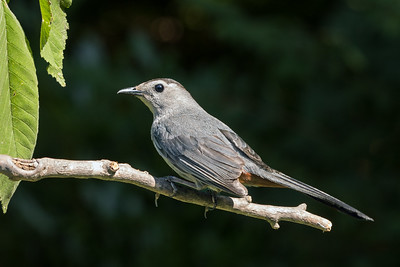
With a long, rounded black tail and a narrow, straight bill, it is a slender, medium-sized songbird, whit very long legs and short, rounded wings.
They are completely slate gray, possessing a small black head, a black tail, and a rich reddish-brown patch under the tail.
Gray Catbirds are reserved but active, hopping and flitting through tangles of foliage from branch to branch, resting on shrubs and small trees.
They do not tend to fly through open fields, preferring fast and low flights through vegetation.
Tufted Titmouse
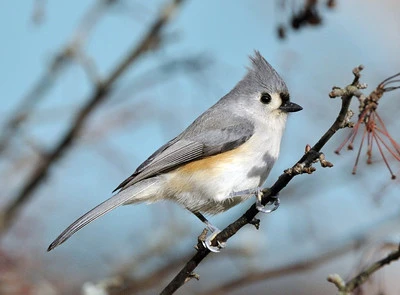
In the eastern United States, the common garden bird.
Silvery gray above and white below, with a rusty color on the sides, they have a black spot just above the bill.
Tufted Titmouses can be found throughout much of the eastern forest below two thousand feet in height. Tufted Titmice are also frequent visitors to feeders and can be found in parks, backyards, and orchards.
Gray Vireo
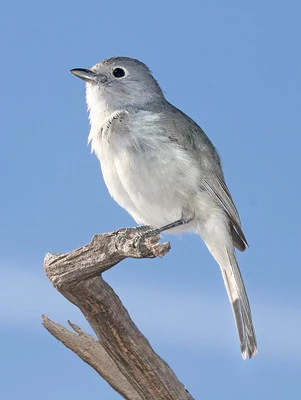
A small, delicately built songbird with a short, somewhat hooked beak, thicker than that of a warbler.
The wingtips extend slightly beyond the base of the tail. A gray bird with a white underside, it has a single light wingbar, which is easier to see in fresh plumage.
Nest in mesquite scrub, oak scrub, chaparral, and stone pine-juniper in desert ecosystems. In similar habitats, migratory and wintering birds are present, as well as in stream beds in deserts.
It leaps through thick foliage and swings to nimbly pick up insects from leaves and twigs along the trees. In early spring, males typically sing from uncovered perches.
Grey Birds with Black Head
Black-capped Chickadee
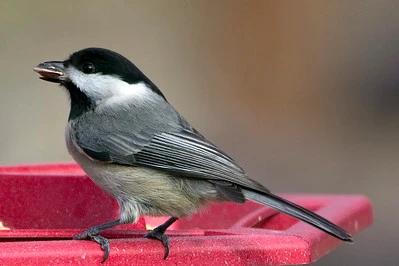
This little bird has a short neck and a large head, giving it a unique and somewhat circular body shape. It also has a long, thin tail and a short bill, much thicker than a warbler but smaller than a finch.
The cap and bib are black, the cheeks are white, the back is soft gray, the white-edged wing feathers are gray, and on the sides graduated to white below, the underparts are soft beige.
The hat reaches a little below the black eyes, making it impossible to see the tiny pupils. In any area of trees or woody shrubs, from forests and wooded parcels to suburbs and suburban parks and even fields of scrub and salt marshes, chickadees can be found.
Black-throated Gray Warbler
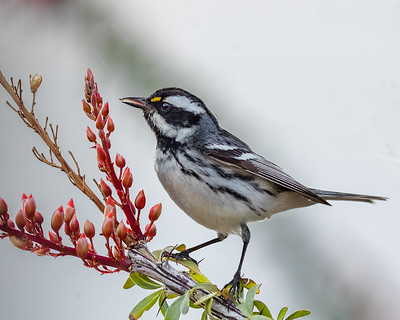
Small warbler with a small, round bill and a large head. Mainly black, gray, and white, with a yellow stripe above and in front of the eye.
With black and white stripes, and sharp black bars on the sides. Females are slightly paler and sometimes have ragged black throats. The belly and tail can be seen perfectly white from below.
With careful movements, it leaps through the trees, going slower than many other warblers. Found in open spruce, pine-oak, and pine-juniper forests.
Red-breasted Nuthatch
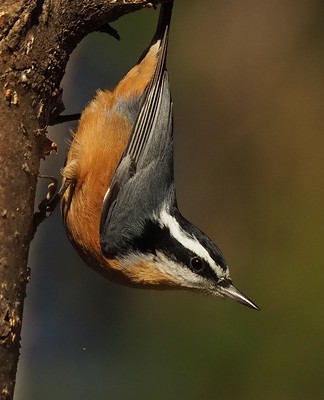
Small, light bird with a sharp expression, accentuated by its long, pointed bill.
They have very short tails and almost no necks in red-chested nuthatches, their body is plump, and the short wings are very wide.
These birds are bluish-gray with heavily patterned heads, a black cap with a line above the eye separated across the eye by a white stripe. The underparts are rich in oxidized cinnamon and the females are paler.
Red-breasted nuthatches travel quickly in crevices and under bark flakes on logs and branches in search of food.
Grey Birds with White Bellies
Carolina Chickadee
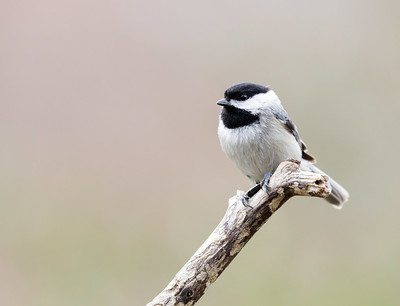
With a short neck and a large head, this small bird has a distinctive spherical body shape, has a very thin and long tail. Its beak is slightly thicker than that of a warbler but thinner than that of a finch.
It has a black cap and a bib divided by white cheeks. There is light gray on the head, wings, and tail.
Acrobatic and inquisitive. It can be seen with other Carolina chickadees and other small species in feeding flocks that roam within a wide area, except during the breeding season.
Although it is an animal of flocks, when it feeds, they are usually very widely spaced.
Black-tailed Gnatcatcher
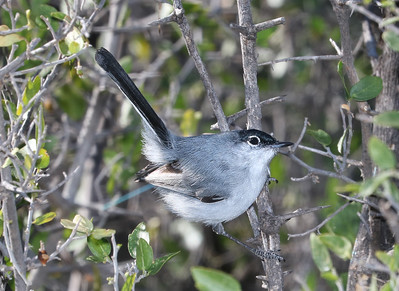
With a thin, straight bill, a compact body, and a long tail, it is a short, thin songbird.
In general, they are dark with one eye surrounded by white and a black tail at the bottom with white highlights. Above that, they are a darker gray, with paler gray underparts.
Breeding males have a characteristic black cap. They prefer thicker scrub areas in deserts. They search the thorns and leaves for small insects and go out into the open to investigate.
They inhabit the desert scrub, as well as areas dotted with ocotillo, prickly pear, cholla, and mesquite also washed thickly coated with creosote and salt bushes.
Gray Birds
Gray Hawk
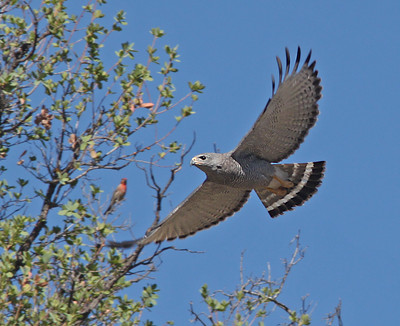
Medium-sized raptors. They have short, wide wings, like other buteos, and a long tail.
The males are much smaller than the females. Adult gray hawks are pale gray birds with small barred chests with striking bands and black and whitetails. White has the undertail coverts; black has the tips of the wings.
The immature spots and the stripes on the underside are dark browns with a dark brown back. A white cheek and an ear divided by a dark line at the eye are prominently stamped on their fur.
Gray-cheeked Thrush
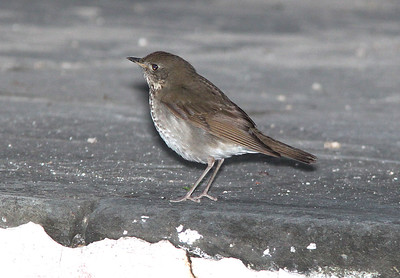
In the firs of the north, their sublime song sounds through the breeding grounds; it is found during migration in scrub and brush.
They have a uniform gray face, a small bill with a yellow base. It has the northernmost breeding range of all American spotted thrushes. As a consequence, this shy scrub-lurker is not well known and is seen infrequently.
Northern Mockingbird
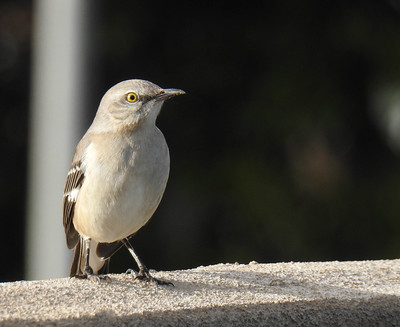
Slightly shorter than a thrush and with a longer tail, a medium-sized songbird. They have small heads, a long, thin beak with a little downward curve, and long legs. Its wings are small, rounded, and wide, which makes the tail appear especially long in flight.
In general, mockingbirds are grayish-brown in color, lighter on the chest and belly, with two white wing-bars on each wing.
In perching birds, a white patch is sometimes apparent on each wing, and they become large white flashes in flight. The outer white tail feathers often attract attention in flight.
Great Gray Owl
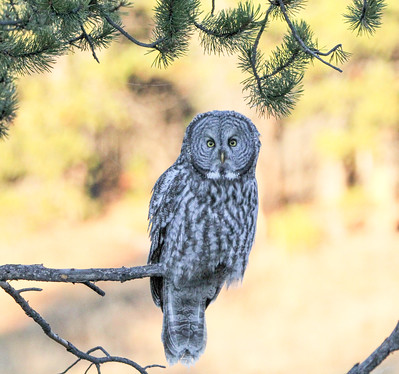
One of the tallest owls, they have large wings and a long tail. They are large-headed owls with a wide disc on their faces.
Although large not so much in weight, most of its volume is made of feathers.
The males are smaller than the females.
Gray owls are typically silver-gray, patterned with thin, wispy white, gray, and brown bar stripes. Between the yellow eyes, two pale arches form an ‘X’. The neck is crossed by a white stripe. Gray owls inhabit dense evergreen fir and pine forests with nearby meadows, and taigas.
Gray Partridge
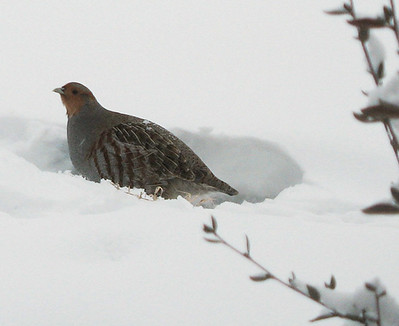
A plump chicken with a round neck, a tiny head, a short tail, and a large, short beak, like a duck. It has short and rounded wings.
Gray on top with rusty stripes on the sides and a tan to the orange forehead. A rusty tail and a horseshoe-shaped brown patch on the chest are gray underneath.
In small groups of adults and youngsters, it searches for food on the ground. It bursts into the air when disturbed, flying low over the ground with rapid flapping wings.
It is mainly found in agricultural fields and grasslands with hedges in North America.
Clark’s Nutcracker
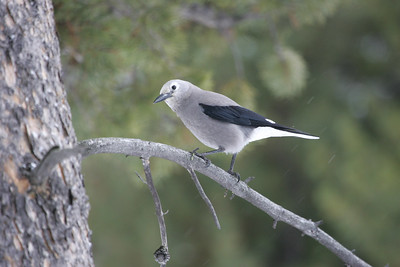
About the size of a jay but built like a crow, with short tails and rounded crestless heads. It has a long, straight, and pointed bill.
They are light gray birds with black wings, the wings show white spots along the rear edges during flight. In the middle, the tail is black with a large white on both sides. The beak, wings, and legs are black. Clark’s nutcrackers are birds of the mountain.
They are closely associated with large seed pines, such as the whitebark pine and the agile pine, but are also found from around three to over eleven thousand feet in the west in montane evergreen forests.
Gray Flycatcher
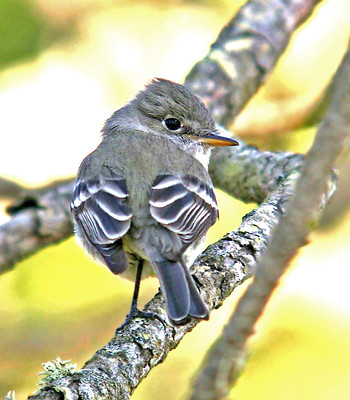
With a very long and slender bill, it is a slender and small flycatcher. It has short wings and does not extend much beyond the tertiary feathers of the main feathers. This also makes the queue appear very long.
Grayish above, whitish below, with a small pale brow. A darker tail and wings with two grayish wing bars. The bill is mostly pinkish or yellowish, usually with a blackish tip.
Nests in mature sagebrush, and with open firs, junipers, spruces, cedars, and scrubby oaks on slopes and mountains.
It migrates over many ecosystems but is mostly detected by willows or poplars in stream corridors. In similar habitats, as well as in arid thorn scrub and wooded its winters.
Sandhill Crane
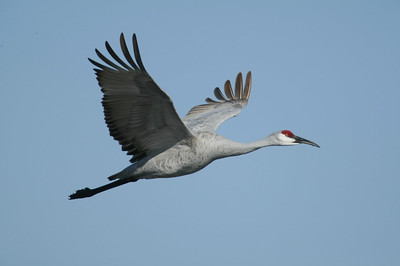
Sandhill cranes are very large, tall birds with long necks, very wide wings, and long black legs. The thick body tapers into a thin neck; Fallen feathers cover the short tail.
The head is thin and the bill is straight and longer than the head. They are slate gray birds, sometimes topped with a rusty wash. Pale cheeks and red skin on the crown are present in adults. Juveniles, without pale cheeks or red crown, are gray and rusty brown.
In open grasslands, prairies, and wetlands, sandhill cranes breed. They also roost in shallow water in ponds or lakes outside of the breeding season, where they are protected from predators.
Gray Jay Bird
Canada Jay
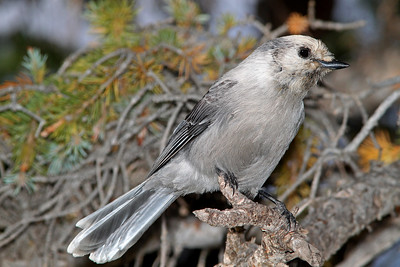
They are robust songbirds, quite large, with small, robust beaks. They have oval heads and long tails, and wide, rounded wings.
Canada Jays are dark gray above and light gray below, with black forming a partial cap on the back of the head.
Juveniles are generally grayish-black in color and usually show a pale opening at the base of the bill.
Typically Canadian jays are in small groups. They fly silently, usually keeping their wings horizontally below them.
While they have a wide range of vocalizations, such as yelling and babbling, they are normally less loud than most jays.
They have very broad diets, they eat everything from berries to carrion.
